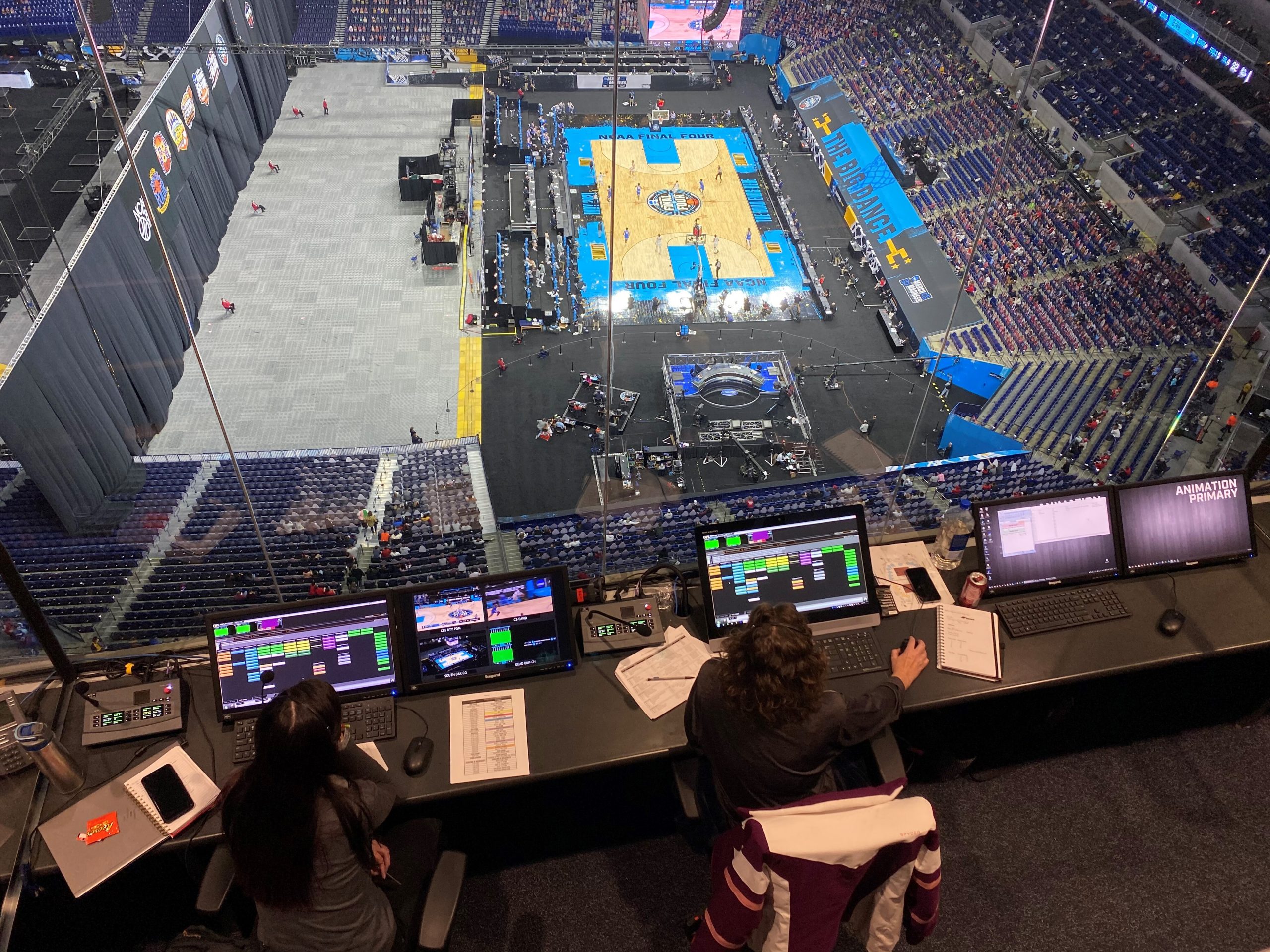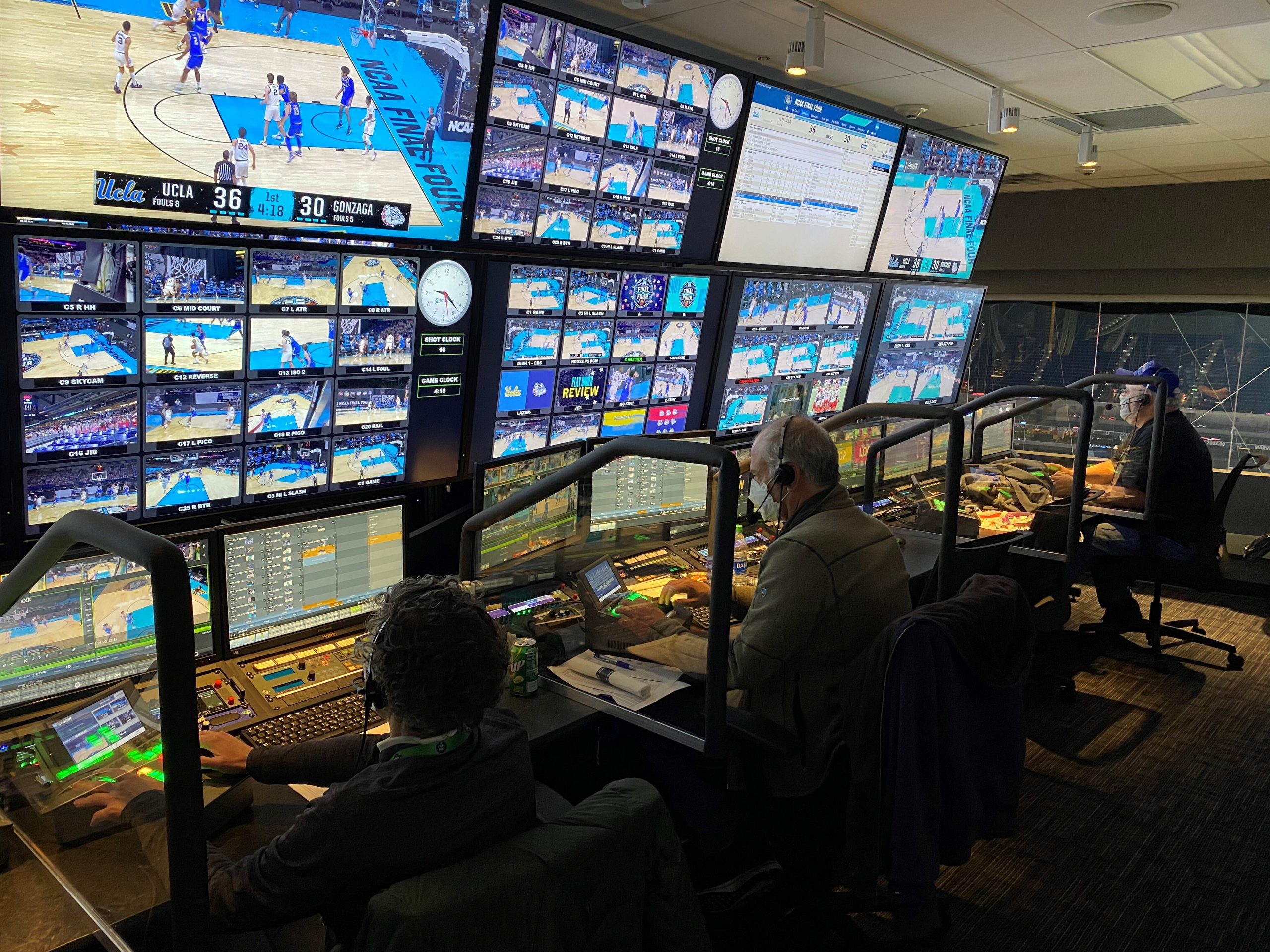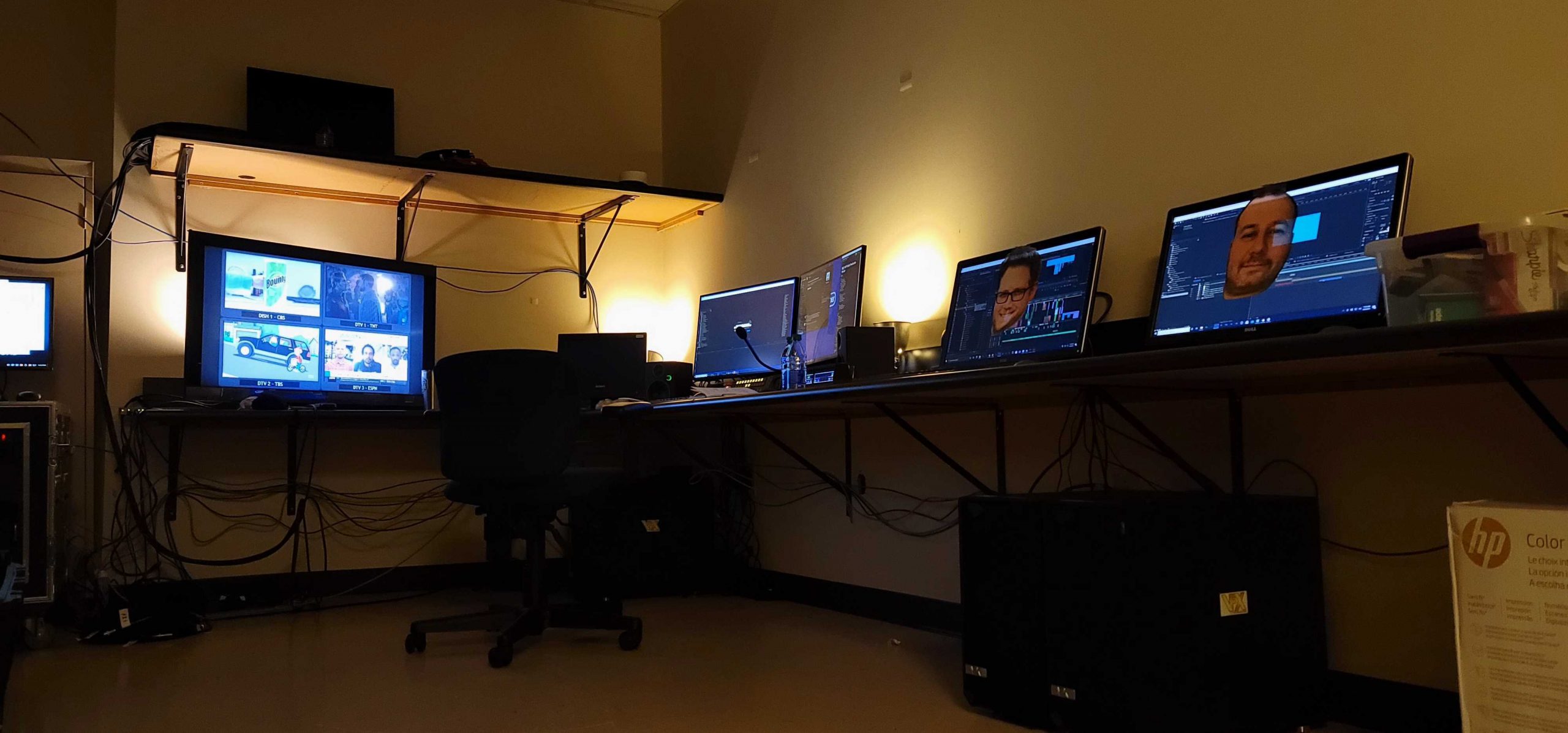NCAA Men’s Final Four: Van Wagner Assembles Multiple-Venue Production in Indianapolis
Sites range from large Lucas Oil Stadium to small Simon Skjodt Assembly Hall
Story Highlights
Like the players who have gutted out close victories and suffered tough defeats, Van Wagner Sports & Entertainment (VWSE) has endured its own challenges during the NCAA Men’s Basketball Tournament. With the return of March Madness, in-venue productions spread over 66 games and six venues culminate in the National Championship Game between Gonzaga and Baylor tonight at Lucas Oil Stadium.
“There have been a lot of challenges, but, at the end of the day, it’s still exciting that we’ve been able to play all of these games,” says Daniel Zerunyan, senior producer, VWSE Productions. “We’ve used a lot of remote workflows, but it’s as if everyone is here, and it has been a really good experience.”
Wild Saturday Night: Colts Production Team, Offsite Editors Ease Workload
Instead of the three control rooms deployed for Super Bowl LV in Tampa, the production crew is housed in a single, socially distant control room at Lucas Oil Stadium, home to this past Saturday’s Final Four matchups and tonight’s National Championship Game. Staffers are also populating additional workstations in free space at the press level. Indianapolis Colts Senior Broadcast Engineer Chris Buckley and the rest of that organization’s internal staff have been vital to the shows occurring in the NFL’s Colts usual home.
“We wouldn’t be able to do this without Chris and his team,” says Zerunyan. “They’ve gone above and beyond and have taken good care of us.”
One measure that has been a constant in high-profile sports productions is the use of remote editors. In Indianapolis, Van Wagner is doing whatever it can to minimize its footprint at each venue. For this past weekend’s slate and the championship, VWSE Creative Director Ryan Kehn is the lone staffer doing real-time editing at the venue. In various offsite locations, four other editors (two in Los Angeles; one each in Santa Clara, CA, and Raleigh, NC) are tapping into two systems via Teradici’s PCoIP technology.
“We set up our internal network to be able to give high-speed access to our editors,” Kehn says. “Our regular infrastructure is still here, and I’m onsite managing that. We’re sharing files in the cloud, but most of the work is being done in this room [at Lucas Oil].”
Divided Venue: Early Rounds Call for Rapid-Fire Productions in Two Courts at Lucas Oil
Located a half mile from the heart of downtown Indianapolis, Lucas Oil Stadium has a capacity of 70,000 fans. Even with audience capped at 25%, the arena has seen a total of 17,500 patrons walk through the turnstiles. With the Colts in the offseason and the concert industry still on prolonged hiatus, the stadium’s operations team constructed a two-court setup that split the venue in two.
With the two courts separated by a large black curtain, early-round games retained their customary intense pace. From a production perspective, this forced the Colts in-venue team to adjust to drastic changes and Van Wagner to adjust to multiple days of back-to-back games in a single venue with two courts.
Since Lucas Oil Stadium has only one large centerhung videoboard, which was tucked away during the tournament, the biggest structural change was the addition of two smaller LED displays for the adjacent courts. ANC handled the installation, but Van Wagner dealt with getting that system online.
“We were actually able to work with Daktronics [for this task],” says Zerunyan. “It was pretty crazy because we had to reinvent their entire LED layout.”
Games on each court — one court named “Unity,” the other “Equality” — received the same in-game treatment, and both videoboards projected content that dazzled fans in the stands. The Baylor-Houston and Gonzaga-UCLA Final Four contests were played on the Unity Court; the other court hosted a 20-minute musical performance by Miley Cyrus between games.
Big and Small Settings: Seamlessly Linked Productions in Multiple Sites
Games at Lucas Oil presented their own set of obstacles, but a nationwide tournament like March Madness involved five other venues across the state. During a normal year, contests are played in large arenas across the country to seat large crowds. In the Central Indiana–based bubble with limited fans, games were hosted by various-size buildings: the medium-size Indiana Pacers’ Bankers Life Fieldhouse (capacity of 17,923), Indiana University’s Simon Skjodt Assembly Hall (17,222), and Purdue’s Mackey Arena (14,240) and the small Butler’s Hinkle Fieldhouse (9,100) and IUPUI’s Indiana Farmers Coliseum (6,800).
Despite the variety of sizes, Van Wagner deployed a producer at each venue to ensure a somewhat similar experience for all fans throughout all participating stadiums.
“We’ve tried to keep that consistent amongst all venues,” says Zerunyan. “[For example], the audio at Hinkle Fieldhouse feels very intimate, and the audio stays in there, but, at Lucas Oil, it’s not the same environment when you have fans everywhere.”
COVID-19 has obvious effects on who can attend these games, but, from Van Wagner’s point of view, the makeup of each crowd affects what content can be pushed out and when. Smaller venues, such as Assembly Hall, allowed only immediate family and friends into the stands, whereas audiences at larger venues have comprised raucous student sections and generic fans of college basketball.
“When Loyola Chicago and Illinois played, the place was packed with two loud fanbases,” says Zerunyan. “The NCAA worked with Firehouse Productions to bring in supplemental crowd noise, so you heard it more in one venue than you did in others, based on the number of fans that were inside.”
During the early rounds, production deadlines were more frequent than at the end of the tournament. As the person leading the way, Kehn has seen a change in the way content has been produced and helped the team shift from “March Madness” mode to putting all efforts on the last two days of competition.
“There’s some overlap between March Madness and Final Four,” he notes, “but we have an almost entirely other team that proofs every piece of content across the board. This was also the first year when we relied on complete digital delivery; we would typically send hard drives out to venues.”
What’s To Come: Title Game Sets Up Future Events on Normalized 2021 Calendar
After an entire year away from college basketball’s greatest treasure, Van Wagner is more than ready to put a bow on a tournament that saw only one cancellation due to the pandemic. Throughout the team’s time in Indianapolis, the process has forced everyone to think differently and adapt to production hurdles that they wouldn’t ordinarily have to during a normal year. When the ball is tipped off, the trophy is raised, and the confetti falls, it’ll be another marquee event for Van Wagner and another step closer to a more normalized schedule of events in 2021.
“We’ve been forced into rethinking some things this year,” says Kehn. “It has been a really healthy exercise to go through. Even on elements that we aren’t changing this year, we’re definitely learning techniques that can be applied towards the tournament next year.”



